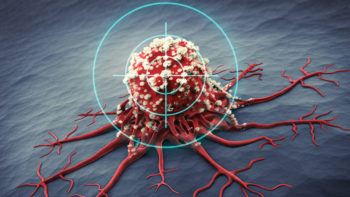In recent years, much scientific effort and funding has focused on developing drugs that target an enzyme with the unwieldy name of Src homology 2-containing protein tyrosine phosphatase 2 or more briefly, Shp2.
Shp2 is a phosphotyrosine phosphatase; its job is to remove phosphates from protein tyrosine residues, aiding and abetting signal communications within cells. But Shp2 has also been shown to promote the growth and survival of many types of cancers.
Indeed, Shp2 is the first identified oncoprotein in the family of tyrosine phosphatases. Oncoproteins are proteins encoded by an oncogene, which can cause the transformation of a cell into a tumor cell if introduced into it. Drugs that inhibit Shp2, the thinking goes, would attack cancer cells in a way different from other therapies, providing new hope for cancer patients.
But in a new study, published online November 9, 2021, in the journal Cell Reports , researchers at University of California San Diego, led by senior author Gen-Sheng Feng, PhD, professor of pathology in the UC San Diego School of Medicine and of molecular biology in the Division of Biological Sciences, reveal a previously unrealized complexity in cancer development, one that raises concerns and caution about targeting Shp2 in oncological treatments.
“Targeting Shp2 as a therapy appears to actually worsen the disease, at least in the case of Myc-driven hepatocellular carcinoma (HCC) or liver cancer,” said Feng. Myc is a commonly detected oncogene, a mutated form of a gene that can cause the growth of cancer cells.
“This finding will have a profound impact in the cancer field, as both the pharmaceutical industry and research labs are putting huge efforts and resources into searching for and making chemical compounds to target Shp2. We believe a new, effective therapeutic strategy must address the secondary tumor-promoting microenvironment generated in response to the primary (Shp2) targeting compound.”
HCC is the most common type of primary liver cancer and the sixth most common type of cancer in the world. It is also among the deadliest. The overall prognosis for survival is grim, with a five-year relative survival rate of just 18.4 percent. The causes and progression of HCC are multifactorial, complex and poorly understood. Treatment is difficult and limited, making it increasingly urgent to find new therapies.
By creating genetically engineered mouse models and doing single cell RNA-sequencing, Feng and colleagues found that Shp2 was required by tumor cells for HCC development, which validated and reinforced thinking that Shp2 presented an ideal target for new cancer therapies.
But they also discovered that removing Shp2 from hepatocytes — a major cell type in the liver — allowed the Myc oncogene to dramatically accelerate HCC growth. They found that inhibiting Shp2 induced an unexpected complex immune-suppressive environment in the liver, which disturbed clearance of tumor-initiating cells in the early stage of disease and exacerbated tumor progression at later stages.
“These unanticipated results may shed light on understanding tumor recurrence, the primary reason why most cancer patients die,” said Feng. “Many cancer patients respond well to primary treatment, which often gives patients and doctors an initial sense of excitement or hope. But once a tumor relapses, hope dims and disappointment arises.
“Most of the cancer patients who die have experienced relapse. It is widely believed that tumor recurrence is due to resistance to anti-cancer drugs, which is true in some cases. But this study demonstrates that the primary treatment itself, even it precisely targets an oncogenic event in cancer cells, will trigger a tumorigenic niche that is responsible for tumor recurrence.”
Feng said the findings challenge a currently popular approach in precision medicine. “We need strategies that treat both the primary tumor and address relapse. Only then can we win the battle against cancer, a most complex and malignant disease.”
Co-authors include: Wendy S. Chen, Yan Liang, Min Zong, Jacey J. Liu, Kota Kaneko, Kaisa L. Hanley and Kun Zhang, all at UC San Diego.
Funding for this research came, in part, from the National Cancer Institute (grants RO1CA236074 AND RO1CA239629) and the National Institutes of Health (T32CAOO9523).


